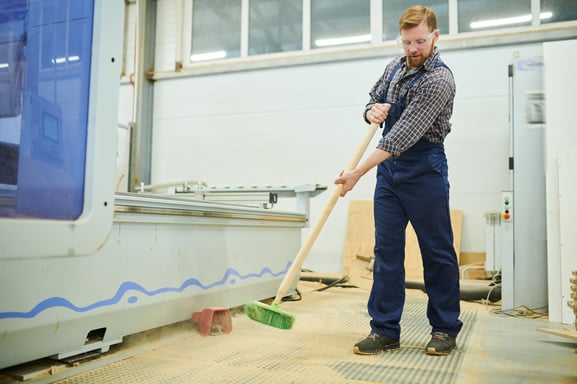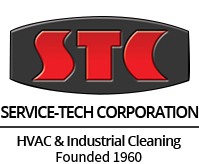By STC Leadership on May 30, 2022 4:28:00 PM
It’s easy to underestimate the potential danger of dust. But the fact is that fine dust particulates of a number of different materials can wreak havoc. They accumulate on walls, pipes, ductwork, ceilings, and into exhaust systems, which creates a hazardous condition, called combustible dust.
Many common substances can form combustible dust including metals, wood, grains, chemicals, coal, plastics, sugar, paper, and certain textiles. The build-up of particulates of such materials can trigger hazardous conditions when compounded with other elements, possibly leading to a fire.
How does this happen exactly? As with fire, the condition occurs when there is a combination of oxygen, heat, and fuel (in this case dust). The dispersion of dust particles in sufficient quantity and concentration can cause rapid combustion, known as deflagration. If this condition is confined or enclosed in a building, room or equipment, the resulting pressure can cause an explosion.
The combustion process, or deflagration (a fireball), can occur when the dust becomes suspended in the air in sufficient concentration, along with an igniter or anything that can cause a spark. This can happen from simply dragging a piece of metal across a concrete floor.

There have been times our technicians have discovered very unsafe conditions in industrial and commercial facilities, as well as public buildings. For example, we have discovered dangerous amounts of wood particulates in the pipes and dust collectors in the woodshops of several schools.
Woodshops are vulnerable to combustible dust because sawdust gets sucked down the pipes onto the dust collectors and inside the ductwork. In one school’s woodshop, we gathered 12, 55-gallon drums of dust and debris! We serviced other schools where a fire started in the dust collector system in one and in the underground duct system of another.
Yes. Fires and explosions triggered by combustible dust have been so frequent that the U.S. Occupational Safety and Health Administration (OSHA) initiated its Combustible Dust National Emphasis Program (NEP) in 2007. The NEP is charged with inspecting facilities that generate or handle potentially hazardous combustible dust.
Read More – A Complete Guide to Industrial Cleaning
It is critically important for facility managers, maintenance, engineering, and housekeeping staffs to schedule periodic cleaning of the different exhaust systems (wood and metal shops, lab fume hoods, paint booth, kitchen, and laundry) and the surrounding areas where dust can collect and go unnoticed. Be sure to have your building/facility cleaned thoroughly and properly, according to OSHA regulations with specialized, explosion-proof equipment.
Cleaning and removal of grease and particulate build-up should be performed by certified and trained technicians using H.E.P.A. vacuuming and or mechanical wet wiping. This type of cleaning should be performed under containment to prevent any cross-contamination of other areas and equipment.
Ask vendors to provide a picture of before and after cleaning, as well as a certificate of cleaning which is required for insurance policies, as well as inspections by OSHA, the FDA, and fire safety agencies.
Proper cleaning and removal of combustible dust not only reduces risks but improves the quality of indoor air. Combustible dust affects the health of a building’s employees and other occupants. Statistics from injury and illness reports filed with OSHA show that workplaces and buildings that establish safety and health management systems reduce their injury and illness costs by 20 to 40 percent.
In addition to properly cleaning your buildings and exhaust systems, other recommendations to prevent combustible dust include:
Here’s the bottom line: Realize the importance of properly handling materials and regular cleaning and maintenance to avoid the accumulation of combustible dust. This goes a long way in keeping your buildings and occupants safe.
Minimize machine downtime and maintain a clean and safe environment for your employees with an HVAC system cleaning partner backed by a history built on hard work, integrity and a commitment to excellent service. Let’s talk about a cleaner, healthier environment.
